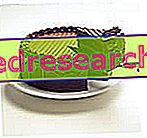By Dr. Davide Sganzerla
Importance of Food
Nutrition is the means by which man introduces and assimilates, in addition to nutrients, also the energy he needs. The purpose of nutrition is to compensate, through an adequate supply of nutrients, the consumption of energy and biological materials imposed by the basal and functional metabolism (increase in metabolism due to physical activity). In the footballer, this compensation must take place particularly precisely, as the best performance can only result from the combination of optimal training and correct nutrition.

The kicker feeding is based on three phases:
- Feed before the game
- Power during the game
- Feed after the game
Feed before the game
The main goal of the pre-game feeding is to keep the blood glucose level constant. This sugar is a valuable fuel for brain and muscle; it can also be stored as an energy reserve, in the form of glycogen (glucose macromolecule), in the muscles and in the liver.
In the hours preceding the game it is very easy to make mistakes in food. Sometimes some of these mistakes do not affect the performance just because the players, especially the young ones, have digestive abilities above the norm, so they manage to have no trouble. Other errors, on the other hand, are not equally venial, since they determine a worsening of physical efficiency even when the player himself does not realize it.
The main mistakes that can be made before the game are:
- States of hypoglycemia (low blood sugar) due to prolonged fasting; this condition results in asthenia, or in an unpleasant feeling of muscle fatigue (the so-called "soft legs");
- States of hyperglycemia (high blood sugar) accompanied by an increase in insulin production (hyperinsulinemia), which in turn leads to a state of reactive hypoglycemia;
- Finish eating when too little time is left at the start of the game. If the interval between the end of the meal and the start of pre-match heating is excessively short (and / or incorrect or poorly combined foods have been taken), both more properly gastric problems (heaviness, acidity, nausea, vomiting), and general problems (dizziness, loss of strength). These unpleasant symptoms are caused by the fact that a large amount of blood is seized by the digestive system, still struggling with digestion, decreasing blood flow to muscles and the brain.
The best time to eat is at least 3 hours before the start of pre-game warm-up.
The 5 rules for a correct pre-game nutrition
The first rule to have an easier digestion is to reduce the fat content in the meal that precedes the meeting. The fats, in fact, on the one hand require long times to be digested, while on the other they lengthen the digestion times of the foods with which they are taken. Furthermore, once digested, dietary lipids cause hyperlipidemia, which is a high concentration of lipids in the blood, which reduces the efficiency of the brain.
Therefore, fried fats and those cooked for a long time should be avoided; should be excluded sausages (with the sole exception of bresaola and defatted raw ham) and fatty meats such as pork. Then the obviously fat parts of the meat, the skin of the chicken and so on must be eliminated; similarly, the parts of roasts or roast beef in direct contact with cooking fat should not be taken; seasonings, cheeses, whole milk, butter, margarine and various types of oils should be reduced.
The second rule is to take a good amount of complex carbohydrates, avoiding the simple ones. Foods rich in carbohydrates are usually easily digestible and can increase glycogen stores in the muscles and liver; complex carbohydrates, or starches, such as those contained in pasta, bread, rice, potatoes and boiled carrots should be preferred. It is the case, instead, to limit the quantity of simple carbohydrates, ie sugars, starting from sucrose - that is cooking sugar - and from glucose (also called dextrose). In fact, when taking several grams of these sugars, as described above, there is at first a rapid rise in blood sugar (ie "hyperglycemia"); this is followed by an injection into the blood of insulin (a hormone produced by the pancreas) in quantities much higher than normal. The blood sugar tends to return to the basal values; however, when the rise in the rate of glucose - consequently that of insulin - is rapid and of considerable magnitude, it may happen that the blood sugar drops below the normal values; we speak then of "reactive hypoglycemia", that is of a lowering of the glycaemia caused by the previous and excessive increase of the rate of glucose in the blood. As mentioned above, hypoglycemia does not allow expression of maximum physical efficiency.



